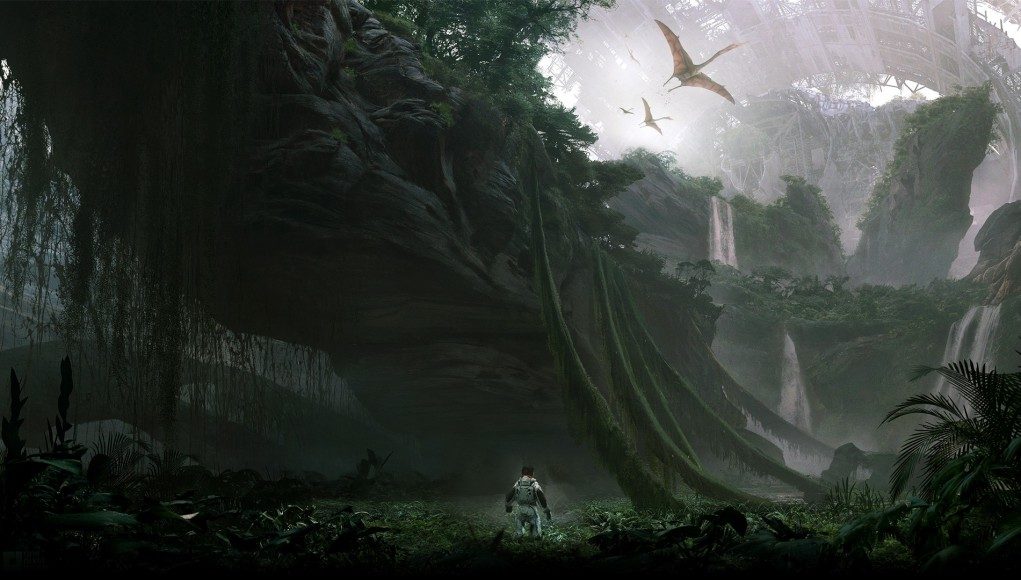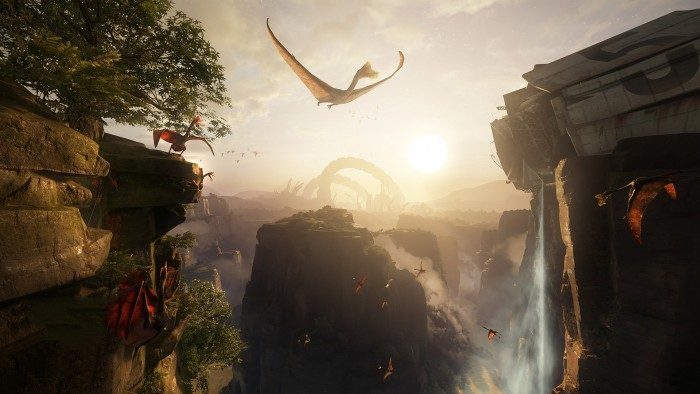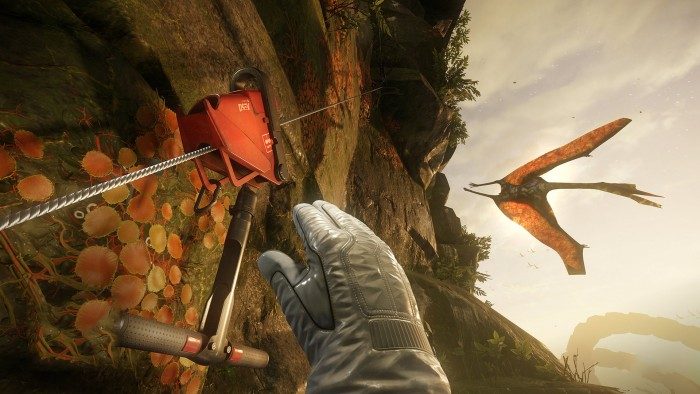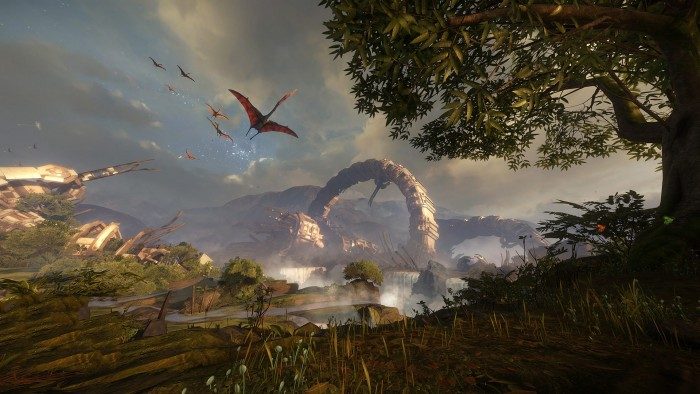Revealing one of the most polished VR demos we’ve seen to date, CryEngine and Crysis developer Crytek were in fighting form at E3 in Los Angeles this year. We speak to Director of Production David Bowman who was bullish about the company’s commitment to virtual reality.
Crytek’s CryEngine has long been the eye-candy darling of the PC gaming industry. Lauded by developers for its cutting-edge rendering capabilities and feared by any PC gamer’s with rigs not capable of keeping up with its demands, it’s been at the forefront of gaming visuals for years. So it’s somewhat surprising that such an engine would falter when it came to supporting virtual reality, about as cutting edge a technology as you can get. Nevertheless, Crytek’s uptake of the technology feels overdue, with its major rivals Unreal Engine and Unity having been present in the space now for some time.
At E3 2015 however, the company left us in no doubt that they are throwing their full weight behind VR and that, most importantly, they’re getting it right, very right. So right in fact that their Crescent Bay prototype of their recently announced Robinson: The Journey was easily one of the highlights of the show for us. And it’s not just the eye-candy the CryEngine team have nailed either—Robinson demonstrates a fundamental understanding of how to build worlds in virtual reality and make those worlds comfortable yet thrilling places to visit.
See Also: Hands-on – Crytek’s ‘Robinson The Journey’ Prototype is a Visual Feast, Built for Motion Controls
“We’ve one full team working on Robinson and that team’s growing as we speak … and of course we’re going to continue with experimentation in VR” says David Bowman, Director of Production at Crytek. He cites an example of the team’s rapid prototyping taken from the Robinson demo I’m about to try. “One example in the demo you’re about to see it’s possible to fall, and if we let you bounce off the rocks like we did in the first version of this demo you would get sick.” says Bowman. “So we did 20 iterations of falling ’til we got to a solution set that we like. That’s the kind of things you have to do to make great VR”
At GDC this year, Crytek told us that it had built up a 50 plus strong dedicated VR team, and they showed a new virtual reality experience built with CryEngine 3. Back to Dinosaur Island, as it’s called, took 20 members of Crytek’s VR team some 45 days to make. Robinson:The Journey was born from that VR tech demo for reasons Bowman shares. When Bowman found Dinosaur Island teams didn’t want to go home after work, preferring instead to continue working, it was clear something was right. “That level of excitement, in this industry, among seasoned professionals … we knew we had something we had to pursue.”
That team continues to grow. As Robinson shifts gears from tech demo to full-blown made-for-VR game, Crytek continues to expand its VR recruitment. By precisely how much? Bowman manages to be at once reserved and bullish “I’m not going to go into specific numbers, but I would argue that we’re one of the largest VR development teams on the planet today.” Whilst that kind of claim wouldn’t have meant an awful lot two years ago, at the rebirth of consumer and retail virtual reality, now it’s a pretty big deal.
Crytek is convinced VR has a bright future, but is wary not to rely on the initial novelty virtual reality brings to consumers. “The first generation, the people are gonna hit this [VR] hardware and go ‘woah, this is really cool!’. But once they’ve looked around a bit they’ll go ‘OK, so why do I have this hardware?’. Robinson‘s the reason to want this hardware.” The theory being that, if you create that incredibly compelling VR experience, one that reaches beyond the initial hype, you can count on players to evangelise both VR and the experience.
On Robinson itself, we find ourselves at a, by now, familiar impasse brought about the lack of useful vocabulary to describe this VR and the experiences it brings. When asked “When Robinson complete, will it be a game or an experience?”, to which Bowman replies “We’re in a problem are a right now within our industry, which is an exciting problem to have – vocabulary for all of this is new.” Bowman says “There’s a spectrum here. You can take a traditional cinematic experience, film it in 360 surround, put on the headset and have an amazing, passive experience. Then there’s the other end [of the spectrum] which is a full immersive game with choice, interactivity, manipulation etc. – we’re falling towards that end so we’re calling ourselves a game, we’re also calling it an experience because it’s both.”
What I can say, having tried Robinson: The Journey as it stands right now, is that it stands as one of the most impressive VR experiences I’ve ever tried. So, for a company that may appeared to come to the ‘VR game’ late, Crytek have on this small amount of evidence more than caught up, they’re trailblazing.
As of 3.8.1, CryEngine now ships with out-of-the-box VR support, starting with the Oculus Rift, with other headsets likely to follow. Also, as we revealed exclusively recently, the engine will ship as part of AMD’s LDK Developer Kit hardware / software package which is due to ship later this year.










